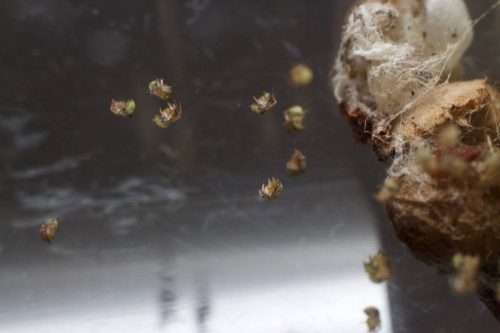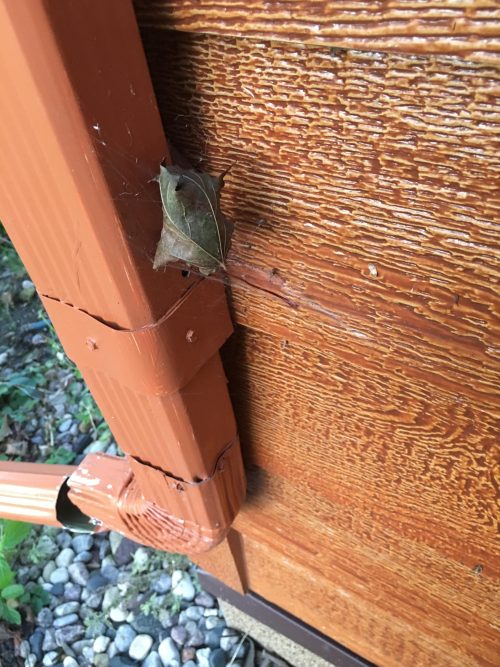Usually, Jenny By-The-Front-Door is huddled up inside her nest, and at best I see a waving leg or three. Tonight, though, she made a rare appearance. Isn’t she beautiful?
I really want to dig into the intricate pigment patterns on Parasteatoda abdomens.










